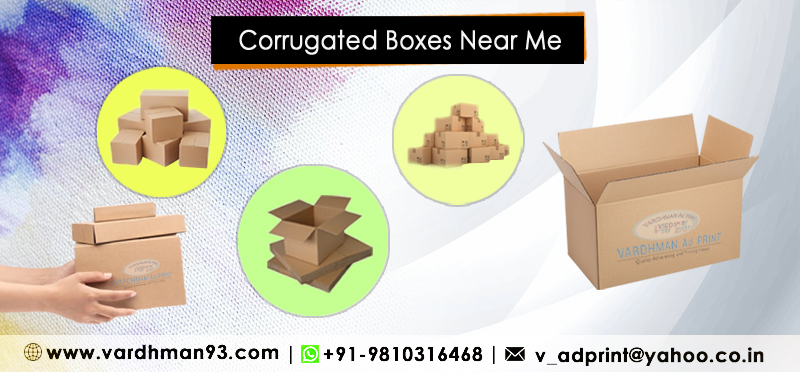- We Print For Printers
- Sunpack Printing
- Sunboard Printing
- MDF Printing
Corrugated Boxes Near Me
- Home
- Corrugated Boxes Near Me

Corrugated Boxes Near Me
Corrugated Boxes Manufacturer of a large vary of merchandise that embody furrowed boxes, significant duty furrowed boxes, plain furrowed boxes, furrowed packaging cartons, physical science packaging cartons, and workplace storage cartons.
What are corrugated boxes?
Corrugated cartons are made from a couple of layers of fabric instead of just single sheet-like cardboard. The three layers of corrugated include an indoor liner, an outdoor liner, and a medium that goes between the 2, which is fluted.
We have installed the entire Corrugated Boxe near me factory From printing to die-cutting and stitching Each n everything under one roof at our existing office cum works address. The Corrugated Boxe Manufacturers' design is that the process of matching design factors for corrugated fiberboard boxes with the functional physical, processing, and end-use requirements. Packaging engineers work to satisfy the performance requirements of a box while controlling total costs throughout the system
What is the difference between cardboard and corrugated?
A cardboard carton is formed of thick paper stock or heavy paper pulp. Corrugated cartons are made from a couple of layers of fabric instead of just one sheet. The three layers include an indoor liner, an outdoor liner, and a medium that goes between the 2, which is fluted.
A cardboard carton is formed of thick paper stock or heavy paper pulp. This material is employed to form a spread of products like small containers, product packaging, and even structural support for fewer rigid items like notepads, inserts that keep clothing items like button-up shirts from losing shape in their packaging, and more. Products are often shipped in containers made from cardboard, but it presents a risk to retailers because the material provides little protection and also requires extra material like bubble wrap to make sure the products inside stay safe.
Corrugated cartons are made from a couple of layers of fabric instead of just one sheet. The three layers include an indoor liner, an outdoor liner, and a medium that goes between the 2, which is fluted. Corrugated may be a resilient material that's also lightweight — a crucial consideration for those shipping a big number of packages. These containers will remain sound even when exposed to shocks, moisture, and sudden temperature changes. While no container is invincible to excessive force or prolonged and harsh conditions, corrugated provides a better level of assurance that your products will move from your warehouse to their final destination in great shape.
How to measure a box?
Dimensions should be stated within the sequence of Length, Width, and Depth (exceptions include book folds, bin boxes, and dividers, where the sequence is Width, Length, and Depth).
The length is usually the longer dimension, and therefore the width is usually the shortest dimension, measured alongside the opening of the box. The depth is that the distance between the opening and therefore the opposite panel.
Boxes are generally measured from within, with the size pertaining to the opening of an assembled box. Inside dimensions are used for measuring because the corrugated cardboard thickness may vary. A box constructed of a B flute won't have equivalent outer dimensions as a box made up of an E flute.
Many other sorts of corrugated boxes and structures are available:
> FOL (Full Overlap): A Full Overlap Box is analogous to an RSC apart from the main flaps fully overlap. Full-overlap flaps provide extra stacking strength and edge protection.
> HSC (Half-Slotted Container): Half-Slotted Containers (HSC) are almost like an RSC, but with just one set of flaps. they're useful when an open-top container is desired. HSCs are often wont to create a telescope box.
> A corrugated tray is usually used for display purposes or used with a shrinkwrap
> Corrugated corner pads are often used for product support and cushioning
> Special die-cut shapes have almost endless designs and use.
Please contact a sales representative today at (+91) - 981 031 6468
